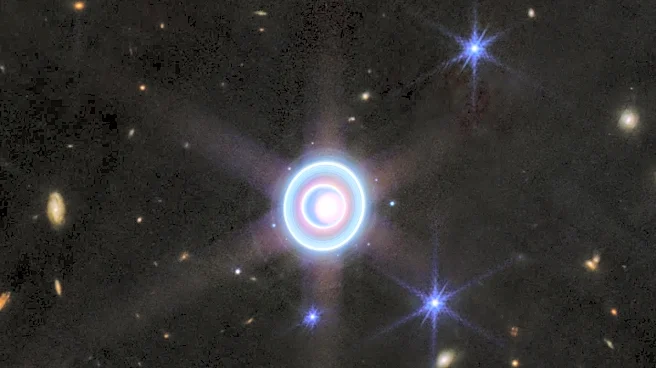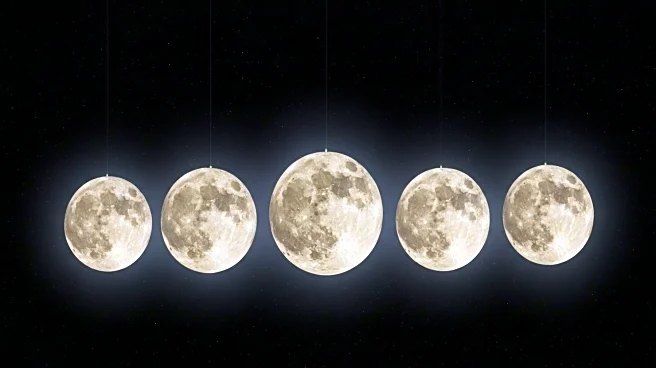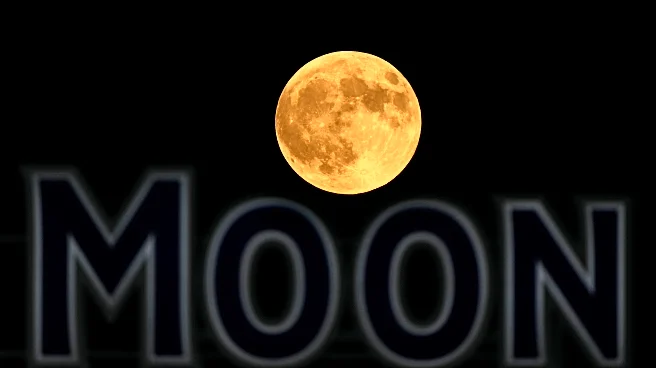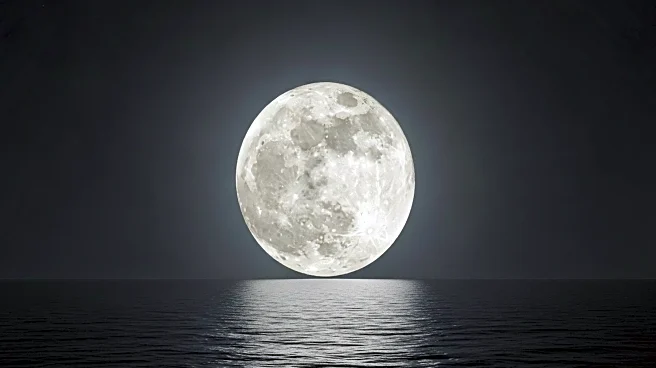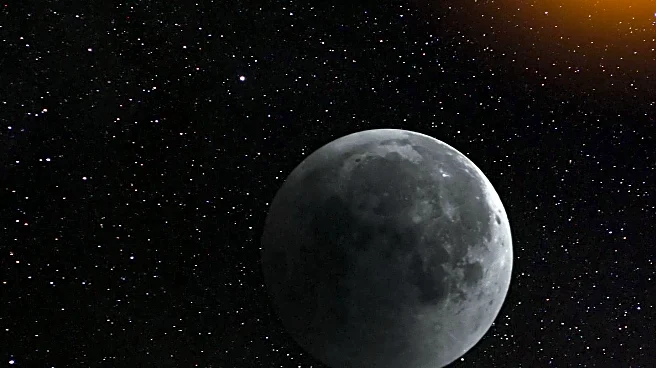What is the story about?
What's Happening?
NASA has announced that three consecutive supermoons will be visible in the night sky, starting with the Harvest Moon on October 6. A supermoon occurs when the full moon is at its closest point to Earth, known as perigee, making it appear larger and brighter than usual. The Harvest Moon, traditionally significant for farmers, will be followed by the Beaver Moon on November 5, which is the closest the moon will be to Earth this year. The series will conclude with the Cold Moon on December 4, marking the beginning of winter. These supermoons are expected to attract both amateur stargazers and professional astronomers due to their increased brightness and size.
Why It's Important?
The occurrence of supermoons has implications for both scientific observation and cultural traditions. Scientifically, the proximity of the moon during these events can affect tidal patterns, leading to spring tides or king tides, which are characterized by the greatest difference between high and low tides. This can impact coastal regions and marine activities. Culturally, supermoons have historical significance, with names like Harvest Moon and Beaver Moon rooted in agricultural practices and Native American traditions. The visibility of these supermoons offers an opportunity for public engagement with astronomy and a chance to appreciate natural phenomena.
What's Next?
As the supermoons approach, individuals interested in observing these celestial events are advised to check local weather forecasts for clear skies. Coastal communities should monitor tide levels due to potential changes in tidal patterns. Astronomers and educators may use these events to promote interest in astronomy and provide educational opportunities about lunar cycles and their effects on Earth. Additionally, the increased visibility of the moon may inspire cultural and artistic expressions related to the themes of harvest, preparation for winter, and introspection.
Beyond the Headlines
The supermoons highlight the interconnectedness of natural phenomena and human activities. The gravitational effects of the moon on tides underscore the delicate balance between celestial bodies and Earth's environment. Furthermore, the cultural significance of these moons reflects humanity's longstanding relationship with the natural world, where celestial events have historically guided agricultural practices and seasonal preparations. The supermoons serve as a reminder of the importance of preserving cultural heritage and understanding the scientific principles that govern our planet.
AI Generated Content
Do you find this article useful?
